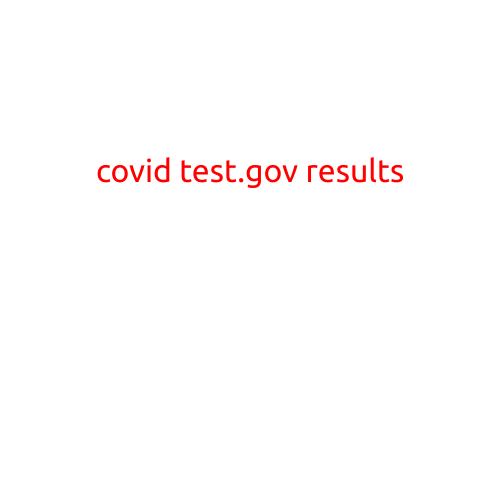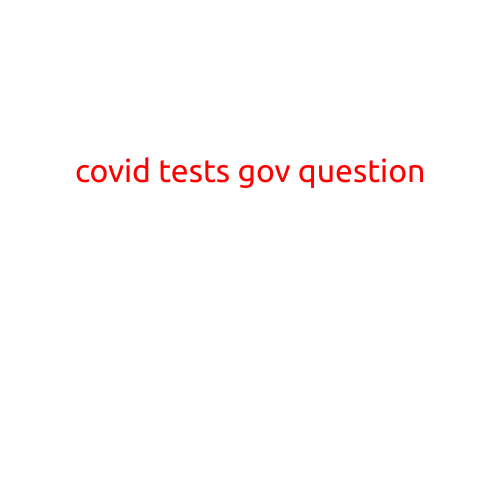
COVID Test.gov Results: A Guide to Understanding Your Test Results
Since the start of the COVID-19 pandemic, rapid COVID-19 testing has become an essential tool in diagnosing and controlling the spread of the disease. With the increasing availability of COVID-19 tests, it’s essential to understand what your test results mean and what actions to take next. In this article, we’ll break down the results from COVID Test.gov and provide a comprehensive guide to help you navigate the process.
Understanding COVID-19 Test Results
COVID-19 tests are designed to detect the presence of SARS-CoV-2, the virus that causes COVID-19. There are two primary types of COVID-19 tests:
- Molecular Tests: These tests detect the genetic material of the virus using a PCR (polymerase chain reaction) or NAAT (nucleic acid amplification test). Molecular tests are highly accurate and can detect even small amounts of the virus.
- Antigen Tests: These tests detect the proteins on the surface of the virus, which are present in the body when a person is infected. Antigen tests are less accurate than molecular tests but can still detect the virus.
COVID Test.gov Results
When you take a COVID-19 test through COVID Test.gov, you’ll receive one of three possible results:
- Positive: A positive result indicates that you have been infected with SARS-CoV-2. This means you are likely to be contagious and should take immediate action to isolate yourself and prevent the spread of the disease.
- Negative: A negative result indicates that the test did not detect the virus. This does not necessarily mean you are not infected, as it’s possible to have a false negative result, especially if you were tested too early in the incubation period.
- Invalid: An invalid result typically indicates a technical issue with the test, such as a faulty test kit or incorrect testing procedure.
What to Do If You Test Positive
If you test positive for COVID-19, you should:
- Isolate yourself: Avoid contact with others to prevent the spread of the disease.
- Notify your healthcare provider: Inform your healthcare provider of your positive test result so they can guide you on further testing and treatment.
- Follow public health guidelines: Follow local public health guidelines for isolation and quarantine.
- Seek medical attention: If you experience severe symptoms or have concerns about your health, seek medical attention.
What to Do If You Test Negative
If you test negative for COVID-19, you should:
- Continue normal activities: If you are experiencing symptoms, consult with your healthcare provider to determine the cause.
- Monitor for symptoms: Keep an eye on your symptoms and seek medical attention if they worsen or persist.
- Get tested again: If you were exposed to someone with COVID-19 or experience symptoms, consider getting re-tested to confirm the results.
Conclusion
Understanding your COVID-19 test results is crucial in preventing the spread of the disease and seeking appropriate medical care. By knowing what to do with your test results, you can take charge of your health and protect those around you. Remember to stay vigilant, follow public health guidelines, and seek medical attention if you have any concerns.





